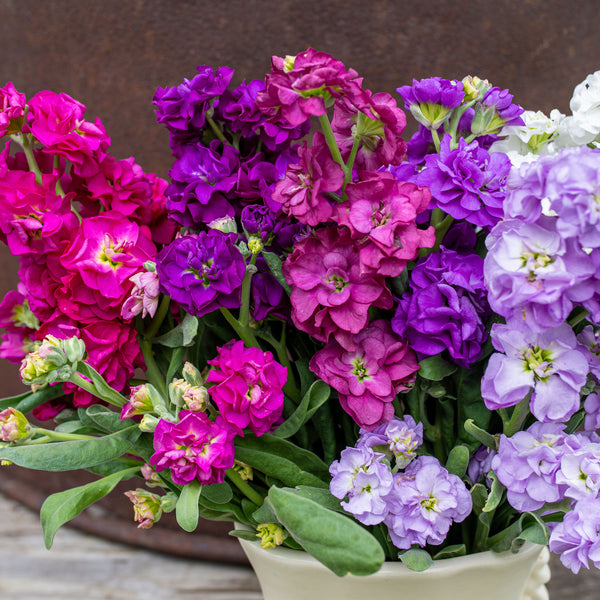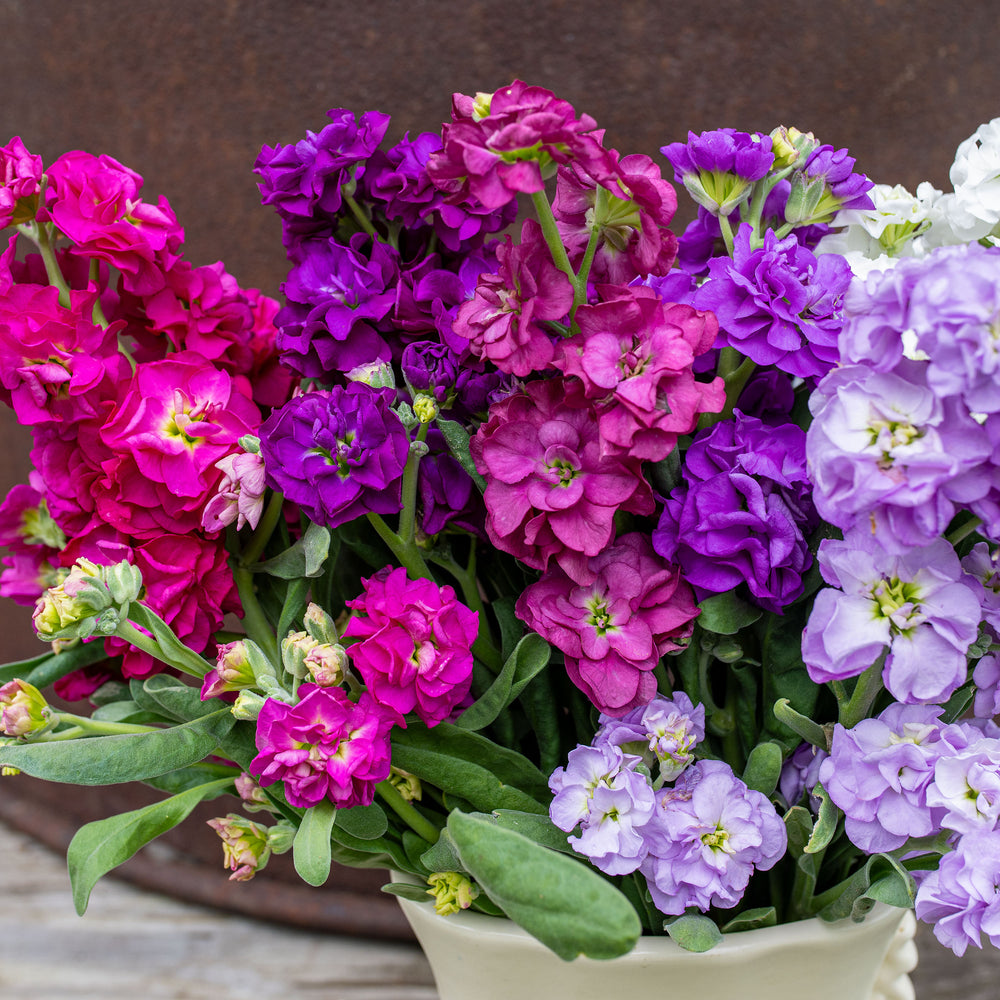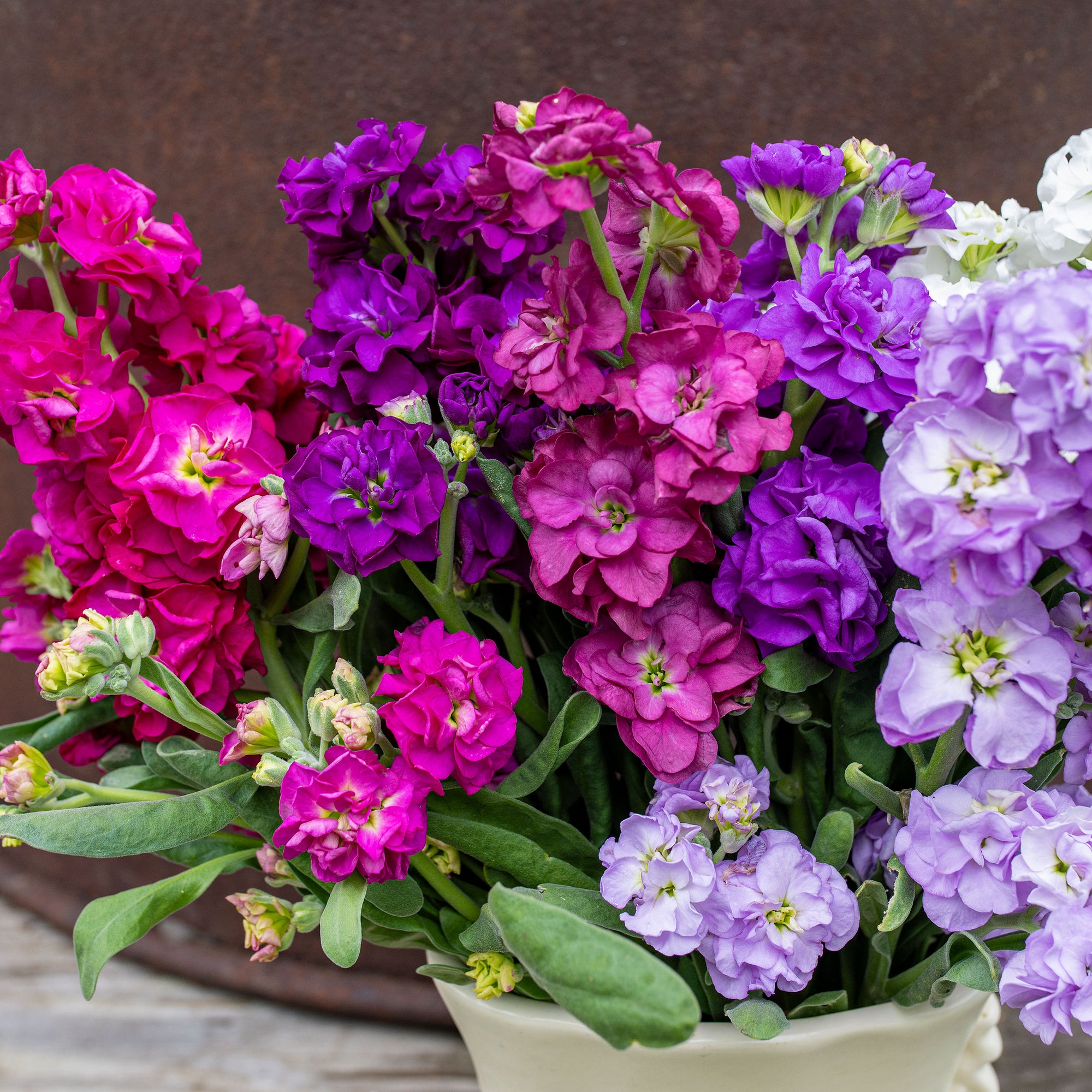SOWING INSTRUCTIONS
Seed To Bloom:
10-12 weeks
Starting Indoors:
Sow indoors in pots 8-10 weeks before last spring frost. Cover with a sprinkling of vermiculite and keep at about 65-68°F. Once fully germinated grow on cool 45-50°F and plant out in early spring.
Starting Outdoors:
Direct sow or sow in coldframe 2-3 weeks before last spring frost in areas with cool summer weather. Sow in early fall in zones 9-10.
WHEN TO SET OUTSIDE
1 week before last frost date.
PLACEMENT & CULTIVATION
Cut flower gardens and backyard borders are enriched by growing fragrant gilliflower. This mix's tall stems are studded with gathered rosettes of bloom, with a good number of single flowered forms appearing as well. Stocks do well where summer weather is cool (75°F or less) and humidity is not sky high, elsewhere they will be less luxuriant and cycle out of bloom quickly. Stocks can be a bit temperamental, for they need an even hand in watering when germinating, and cool temperatures with no check to their development–provide even water, fertilization and roomy quarters during growing on before transplant. The rewards are great, however, for they have lovely flower rosettes in a wide range of hues and a spicy clove-like scent, especially pronounced in the early evening. Seedlings can be selected for doubleness. (After germination during growing on at cooler temperatures, it will be easier to see the different color seedlings, the pale green seedlings are doubles). Discard the dark green single-flowering seedlings if desired. Pinch central bud if desired for full development of the spray form.
Soil pH:
Prefers neutral to alkaline pH levels. If soil is very acidic, mix in some bone meal or hardwood ash prior to planting.
Fertilizer:
Add 1-2" of compost before planting, and dig in deeply. Apply an application of a balanced organic fertilizer once established and follow with high potash fertilizer such as kelp or tomato fertilizer.
Diseases & Pests:
Space 1' apart for good air circulation and water by drip irrigation or early mornings only to avoid leaf diseases. Do not overwater as this can cause root rots-an even hand here is beneficial. Flea beetles and cabbage caterpillars are common pests. Pick off or spray with organic insecticide to help control.
When to Cut for Bouquets:
Harvest when 1/2 of the florets are open.
































